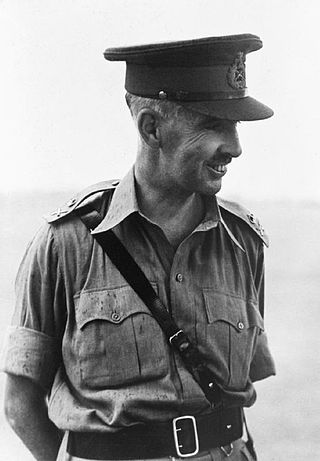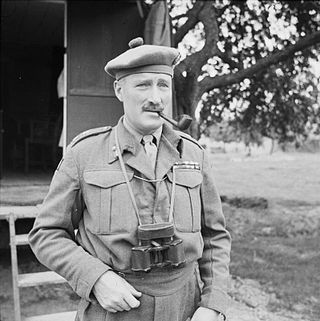
Norman Lubbock Robinson (1890-1951) was a photographer, born in Ireland, known for taking historic photographs of Canada's north. [1] The Northwest Territories Archives contains 709 historic photographs he took.

Norman Lubbock Robinson (1890-1951) was a photographer, born in Ireland, known for taking historic photographs of Canada's north. [1] The Northwest Territories Archives contains 709 historic photographs he took.
Robinson served in the North-West Mounted Police (precursor to the RCMP) when he first moved to Canada. [1] During World War I he served with the 19th Alberta Dragoons, and then with the British Army, Royal Field Artillery. [2] Robinson was promoted to 2nd Lieutenant, and, according to the London Gazette , he was mentioned in dispatches, twice. [3]
After he returned to Canada, following the war he served as an Inspector with the Soldiers Settlement Board. [1] In the early 1920s he travelled to the North-West Territories, spending five years working as a trapper, a guide, and later as purser on the steamship Mackenzie River . It was during this five-year period he took the bulk of his historic photos.
In 1925 he tried to rejoin the RCMP, but was turned down because he no longer measured up to the eyesight requirements. [1] He then operated a lumber business, in Kamloops, until the early 1930s. He married in 1928. Following his work in the timber industry he then became a game warden, a position he held until 1938, when he and his wife spent two years in Ireland.
When he died in 1951 he was working for the Unemployment Insurance Commission as an employment claims officer. [1]

Harold Rupert Leofric George Alexander, 1st Earl Alexander of Tunis, was a senior and highly decorated British Army officer who served in both of the world wars. In addition, following the end of his military career, he served as Governor General of Canada and became the first Lord Lieutenant of Greater London in 1965.

Field Marshal Julian Hedworth George Byng, 1st Viscount Byng of Vimy, was a British Army officer who served as Governor General of Canada, the 12th since the Canadian Confederation.

The Military Cross (MC) is the third-level military decoration awarded to officers and other ranks of the British Armed Forces, and formerly awarded to officers of other Commonwealth countries.

Field Marshal William Riddell Birdwood, 1st Baron Birdwood, was a British Army officer. He saw active service in the Second Boer War on the staff of Lord Kitchener. He saw action again in the First World War as commander of the Australian and New Zealand Army Corps during the Gallipoli Campaign in 1915, leading the landings on the peninsula and then the evacuation later in the year, before becoming commander-in-chief of the Fifth Army on the Western Front during the closing stages of the war. He went on to be general officer commanding the Northern Army in India in 1920 and Commander-in-Chief, India, in 1925.

Lieutenant-General Arthur Ernest Percival, was a senior British Army officer. He saw service in the First World War and built a successful military career during the interwar period but is most noted for his defeat in the Second World War, when he commanded British Empire forces during the Japanese Malayan Campaign and the subsequent Battle of Singapore.

George Harry Mullin was an American-Canadian soldier in the Canadian army. Mullin was a recipient of the Victoria Cross, the highest award for gallantry in the face of the enemy that can be awarded to British and Commonwealth forces.

Edmund De Wind, was an Irish British Army officer during the First World War, and posthumous recipient of the Victoria Cross, the highest and most prestigious award for gallantry in the face of the enemy that can be awarded to British and Commonwealth forces.

John Hornby (1880–1927) was an English explorer, best known for his expeditions in the Arctic region of northern Canada, notably in the "Barren Lands" in the Northwest Territories of Canada.

General Sir Neil Methuen Ritchie, was a British Army officer who saw service during both the world wars. He is most notable during the Second World War for commanding the British Eighth Army in the North African campaign from November 1941 until being dismissed in June 1942. Despite this, his career did not end. Ritchie later commanded XII Corps throughout the campaign in Northwest Europe, from June 1944 until Victory in Europe Day in May 1945.

General Sir Rob McGregor MacDonald Lockhart was a senior British Army officer during the Second World War and later the first Commander-in-Chief of the Indian Army upon India's independence.

The Royal Guernsey Light Infantry was an infantry regiment of the British Army that was formed from the Royal Guernsey Militia in 1916 to serve in World War I. They fought as part of the British 29th Division. Of the 2,280 men, most of whom came from Guernsey, who fought on the Western Front with the RGLI, 327 were killed and 667 were wounded.
Alfred Clayburn Atkey, was a Canadian First World War flying ace, officially credited with 38 aerial victories, making him the fifth highest scoring Canadian ace. However, all those above him flew in single-seat fighters, whereas Atkey gained all his victories in heavier two-seater aircraft, becoming the highest scoring two-seater pilot of the war.

Major-General Louis James Lipsett, was a senior officer in the British Army and Canadian Expeditionary Force during the First World War. He commanded the 3rd Canadian Division during some of the bitterest battles of the war, taking over in 1916 after his predecessor, Malcolm Mercer, was killed. In 1918, Lipsett took command of the British 4th Division. Less than a month before the end of the war, during a reconnaissance mission observing German positions along the River Selle, Lipsett was killed. He was the last British general to be killed during the First World War.
Flight Lieutenant James Anderson Slater was a British First World War flying ace, credited with 24 aerial victories. He served in the Royal Air Force (RAF) as an instructor after the war until killed in a flying accident.
Edward Gribben was a World War I flying ace credited with five aerial victories. He became a lieutenant-colonel in the Territorial Army between the wars, returning to the RAF in World War II, and rising to the rank of squadron leader.
Major Victor Henry Huston was a First World War flying ace credited with six aerial victories. He was the only ace in his squadron.
Captain George Henry Hackwill was an English World War I flying ace credited with nine aerial victories. His most notable victory was his role in shooting down a German Gotha G.V, over Essex on the night of 28 January 1918. This was the first victory ever achieved in combat between aircraft at night.
Lieutenant Malcolm Plaw MacLeod (1897-1960) was a Canadian flying ace. He was credited with seven aerial victories scored during the closing days of World War I. He then returned to Canada to complete his education and work as a stockbroker until World War II, when he served in the Royal Canadian Air Force for the war's duration.
Major Wulstan Joseph Tempest, was a British First World War pilot with the Royal Flying Corps and Royal Air Force. He was celebrated for shooting down a Zeppelin R Class airship over Potters Bar in October 1916.
William Norman Walker was a Scottish first-class cricketer and cricket administrator, and an officer in the British Army.
For conspicuous gallantry and devotion to duty when in charge of a cable-laying party. He displayed the greatest courage and determination in carrying out the task allotted to him in face of great difficulties and under heavy shell fire, personally laying the cable, and pushing on through heavy barrage when the situation was obscure in order to gain information which could not be obtained in any other way. His energy and disregard of danger cannot be too highly praised.